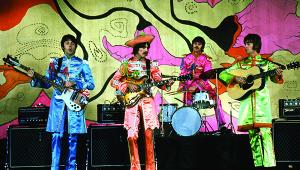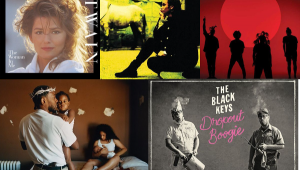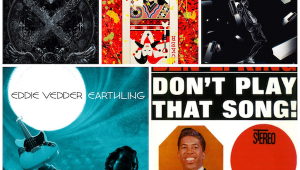Stay With Me, Spatial Audio

As we head into the long weekend ahead, might I respectfully suggest you open your ears to a fine quintet of all-new Atmos recommendations on display here in our latest weekly installment of Spatial Audio File? Each track has been lovingly test-driven via personal listening sessions on both my home system and headphones alike. And, hey, if your weekend winds up being somewhat travel-oriented in spots, you can tap directly into the very best of the immersive Spatial Audio and Dolby Atmos universe available in the always expanding Apple Music library to serve as your perfect on-the-road-again soundtrack companion. Win-win, I say!!
And this week’s five superstar tracks are. . .
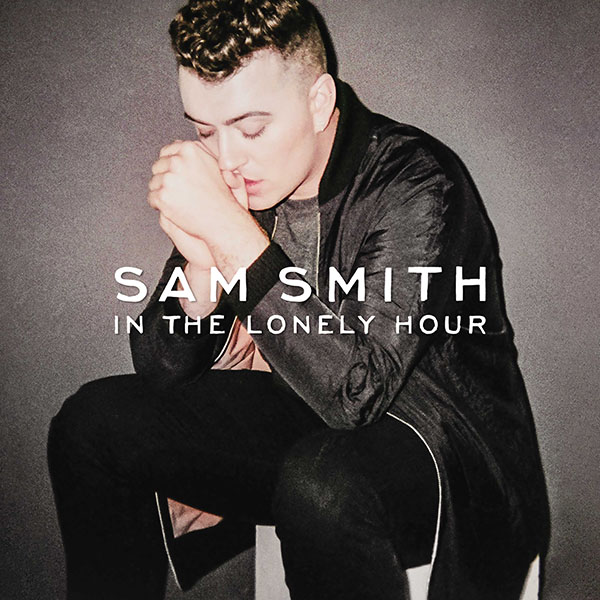
SAM SMITH: “STAY WITH ME”
Sam Smith’s breakout single “Stay With Me,” a gospel-tinged gem of a track culled from the artist’s absolutely thrilling June 2014 debut solo album In the Lonely Hour, hit the top of the British charts and peaked at No. 2 here in the U.S.—and with every good reason. Even better, the Atmos form of “Stay With Me” is perhaps the best example of why Smith wholly deserves his Featured Artist status in the Spatial Audio tract on Apple Music this week.
The mournful opening piano chords emerge in the middle field, resonating between the width of an established zone slightly center left and center right, while the kick drum locks in directly behind it and the cymbal work nestles well over to the right, essentially mirroring the physical proximity and locale of these elements in an actual drumkit. >p> When Smith’s emotive vocal enters on high up the middle with the evocative line, “Guess it’s true, I’m not good at a one-night stand,” they take a resigned breath before delivering the next line, “But I still need love ’cause I’m just a man”—a line reading that only adds to the weight of what they are feeling in that moment. Smith’s vocal acumen is such that but a mere 21 seconds into this song, you’re already on their side before you even know the entire story. Even if you’ve heard this song hundreds of times before, it’s still as affecting as the first time you experienced it.
Smith’s voice is brought even further ahead in the mix on the next lines, in effect bringing them closer to you as the story continues to unfold. The artist’s enunciating choices on key words like “look,” “lay,” and “hurt” all lend the exact gravitas needed for every syllable.
The instant the first reading of the title phrase enters, a gospel choir falls in behind Smith at both heightened volume and heightened placement, a slight echo delay quite noticeable at the end of each word block they sing. Oh, wait, I’m sorry—did I say gospel choir? Actually, that’s an amalgam of Smith’s multitracked voice you’re hearing there, layered oh-so-beautifully all throughout the song.
It’s here you begin to notice the thump of the bass content hitting you in the chest, and the drum pattern being given a wider berth as well. Smith’s vocal control continues to amaze, as they veer into falsetto on certain words and back, sometimes within the same line. As the next chorus unfolds, the Smith choir remains loud and on high, almost overtaking the lead vocal because of their collective power, but you can still single out that lead voice in the blend. You should also be able to pick up on the tambourine that has been making its presence known in the left quadrant.
The wordless “woah-oh” break takes the choir even higher as Smith rolls a bit to the left of center, where they stay for their next run at the title line before moving slightly to the right, now backed only by the piano—and then the string section appears to help carry things to the finish line.
“Stay With Me” will indeed stay with you long after your first night, er, pass with it has faded into the ether. The song’s deeply moving emotionality easily makes this our top-tier Made for Spatial Audio track of the week.

DEF LEPPARD: “FIRE IT UP”
The unstoppable rock brigade that is Def Leppard drop their latest studio album Diamond Star Halos today—and if you know your glam rock history, you’ll instantly recognize exactly where that wonderfully delicious album title comes from. (Hint: The artist’s name rhymes with “G. Lex,” and the song title rhymes with “Hang a Tong.”) Not only that, but the Halo-held fist-pumper “Fire It Up” carries the torch for the absolute power of big-time big-league rock mixes in Atmos.
The repeated, layered-vocal title phase takes center stage to start, as drummer Rick Allen’s two-beat kick holds the middle with the ensuing mirrored handclaps spread wide and a guitar goulash behind it all also swirling slightly back in the mix. And then, the aural seas part as a gnarly guitar riffola moment sets the table for vocalist Joe Elliott to take over up high to declare, “Born to raise hell / Since I lost my heaven.” (Hello, old friends—nice to have you back in full force!)
Yes, the flow of “Fire” is certainly reminiscent of a certain confection-dripping track from the band’s 1980s heyday, but it’s more of a wink-nudge callback intended to bring smiles to listeners’ faces along with the requisite headbanging responses. In these perennially turbulent times, it’s bloody well nice to have such unapologetically vibe-positive music to, well, fire up.
Elliott’s clean, throaty centralized vocal picks up the pace as the hard-panned guitar riff and drumming continue to support him. The repeated pre-chorus phrase “Bring the big beat back” is pure layered Leppard vocal magic. As soon as Elliott exclaims, “Here we go!” we’re already primed for the title phrase to take over the central locale, spreading slightly wide in front of a sustained guitar riff that slinks across the stage, almost exactly as the ace axe tandem of Phil Collen and Vivian Campbell would do—and soon enough will be doing—live.
The vocals drop out briefly for a related guitar riff to peel across the field, itself soon enough falling away to enable Elliott to take the next verse again up the middle without intrusion. This is a band that knows how to put shining examples of their seamless teamwork directly into their actual mixes. And if you’re not singing and/or headbanging along with the next vocal-slathered chorus, we need to get you to an emergency room, STAT.
You should also get a kick out of the “hi hi higher” singalong bridge, replete with a somewhat buried megaphone vocal break and backwards drum elements in tow, all leading up to the muscular, field-dominant Collen guitar solo.
Blaze on indeed—“Fire It Up” fires big on all of Def Lep’s patented crowd-pleasing cylinders in Atmos.
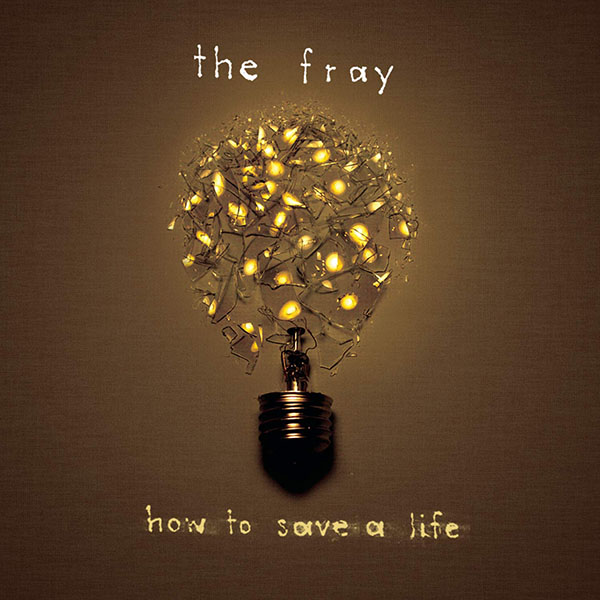
THE FRAY: “HOW TO SAVE A LIFE (NEW VERSION)”
Denver-bred alt-pop rockers The Fray scored a No. 3 hit single with “How to Save a Life,” the heartfelt title track to their September 2005 debut studio album, and it reaches even deeper into our collective souls in Spatial Audio.
A stark acoustic piano intro opens the track mostly in the center left, the resonance of the riffs and the foot pedal movement slightly right of center before you hear vocalist Isaac Slade take a deep inhale of a breath before the first line, “Step one, you say we need to talk.” When he gets to the second line, Slade’s voice is louder and more out front in the mix, almost like he’s leaned in to lend additional reassurances. His voice carries across the field, to the right and back to the middle as the tale continues to unfold, the piano (incidentally being played by Slade) holding the space behind him before the drums finally kick in to keep the beat moving.
Slade’s vocals, still essentially in your face—albeit in a nonconfrontational way—now get a slight echo effect as he moves back and forth, extending vowels a bit further and emoting a bit harder. When the pre-chorus rhetorical line, “Where did I go wrong” arrives, the rest of the band kicks in to fill out the arrangement, with sustained guitar lines hovering back just a tick as the drums continue to stay dominant.
After Slade reaches the title line the first time, a counter guitar riff responds center left and pulls more fully to the left, shifting into a more noodly chordal figure as the piano retakes the melody and the drums lead into the next verse. The character of Slade’s vocal is more calming here, accurately reflecting how the song’s narrative continues to unfold. The piano goes hard left and the drums go right, then back to the center—not unlike the arc of a subtle emotional rollercoaster.
A super-brief guitar solo stays ensconced at the left with deadened cymbal-top taps as support, while Slade takes another run at the chorus. As he extends the word “life,” a cymbal crash clears the space for vocal and piano only for a poignant repeat of the title line before the full Fray return to carry the song through the final push, each instrumental element dropping out until the drums (snare, kick, and cymbals) move to the forefront, with the piano now serving as its support.
Perhaps the sheer weight of the literal world we live in at this very moment makes “Life” all that much more personally impactful, a telling testament to the timeless nature of great songwriting—a.k.a., step one. The soothing, helping-hand intent of “How to Save a Life” is a true lifesaver in Spatial Audio.
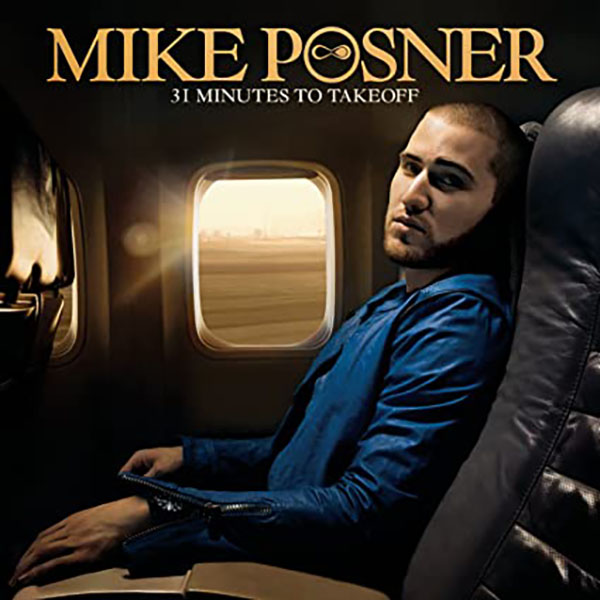
MIKE POSNER: “COOLER THAN ME (SINGLE MIX)”
Electropop chameleon Mike Posner sure knew what he was doing when he dropped “Cooler Than Me,” the lead single from his August 2010 debut album 31 Minutes to Takeoff. Proof being, this undeniably catchy track ultimately reached No. 6 on the singles charts. Essentially a dorm-created DIY track at heart, “Cooler” certainly lives up to its name in its Spatial Audio incarnation.
Posner’s breathy vocals are well out front as the track begins, clip-clop percussion that would make Brian Wilson of The Beach Boys smile doing its thing behind him at center left, along with a percolating synth sample quite well spread out as support. “You probably think you’re cooler than me,” observes Posner’s doubled vocal line high and wide in the field—though we’re probably not, actually, due in no small part to the intuitive production hand of Gigamesh.
The synth begins to crest behind Posner as he sings the title phrase again—and then it’s full-on EDM bounce time, as the sampled bass takes up residence on both sides of the plane, sure to challenge your subwoofer if you don’t have it dialed in properly. (Consider yourself duly warned.) Slap percussion carries the middle until a quick drop for Posner’s return, his command of the proceedings again on full display. He’s up high in the middle as the low-end rumblings continue to burble away on the respective fringes of the field.
You should definitely revel in the juxtaposition of the word “noise” followed by a quick “shh,” along with what stays in and what’s pulled out of that moment of the mix. It’s a sequence so, well, cool that it recurs less than a minute later, and it’s no less engaging the second time around. Meanwhile, Posner’s response vocals to certain lines in the back half of the track split wide in the field, as his main vocal stays true to the center lane. The drop and repeat of the chorus buildup leads into a fine, field-dominant synth solo down the middle to carry the track home.
Posner knows it, and so do I—“Cooler Than Me” is cooler than thou in all the right ways in Atmos.

JONAS BROTHERS: “A LITTLE BIT LONGER”
The fraternal trio from New Jersey well-known far and wide as Jonas Brothers have long proven themselves to have incredible staying power, given their inherent knack for creating hooks and singalongs galore. One of their most deeply personalized hits, “A Little Bit Longer,” the title track to their August 2008 album, is a clear reinforcement of these Brothers’ hit-making prowess in Spatial Audio.
Nick Jonas wrote “Longer” about his struggles with Type 1 diabetes, and the track opens with him playing sustained piano riffs backed by a plaintive cello. The opening lyric, “Got the news today / Doctors said I had to stay / A little bit longer and I’ll be fine,” comes in high and sweet up in the heights. Tempo-setting drums enter in the middle, essentially directly behind Nick to hold down the fort. A few choice guitar riffs ring lightly across the field as Nick muses, “But you don’t know what you got till it’s gone”—certainly not a new thought per se, but one with added gravity in the context of his personal diabetic battles, reinforced here with an insistent centralized snare drum.
Nick’s vocal veers off to the left as he repeats the phrase, “You don’t even know, know, know” before re-centering himself at the outset of the next verse, perhaps a reflection of the somewhat unpredictable nature of blood sugar highs and lows. The string accompaniment is subtle across the field before rising up above to the ether, giving this section of the song some extra buoyancy.
Most of the accompaniment falls away as Nick returns to the “You don’t even know, know, know” line over to the left, the strings now taking residence off to the right before a screaming guitar solo takes over the center field. When the lead vocals return, cymbals are split wide and the guitar briefly slides back in the mix, slithering forward here and there as stacked vocals join in behind Nick’s impassioned pleadings. And then, all else falls away and Nick and his piano get to lead up to his final words that are additionally backed with cello and cymbals, “I’ll be fine.”
While diabetics are still waiting on a cure (as Nick tellingly points out in the lyrics), “A Little Bit Longer” is well worth knowing in Atmos.
Related:
HOW TO GET THE MOST OUT OF SPATIAL AUDIO
For more about the specs, gear, and setup options you’ll need to experience the very best of the ever-expanding Apple Music universe of fully immersive Made for Spatial Audio Dolby Atmos mixes, go here.
FURTHER LISTENING
Still want more Made for Spatial Audio options to listen to before an all-new Spatial Audio File returns next Friday? Go to Apple Music: Spatial Audio Relations to get an additional all-channel fill.

